Slings, Sling Mounts, & Adapters Compared
Posted by Gunbuilders.com on Sep 29th 2023
Slings are often overlooked by new gun owners. But your rifle or shotgun can benefit from a good sling, and not just when it comes to carry or convenience. A proper rifle sling can improve accuracy, providing you with a stabilizer that allows for steadier aiming and better recoil control. These are called sling holds, and we'll cover them here. But first, let's look at the types of slings and their mounts and adapters.
Types of Slings
There are three types of rifle and shotgun slings: One-, two-, and three-point slings. The points refer to how many connections your sling has between its straps and your long gun. Let's look at how each is set up.
Single-Point sling
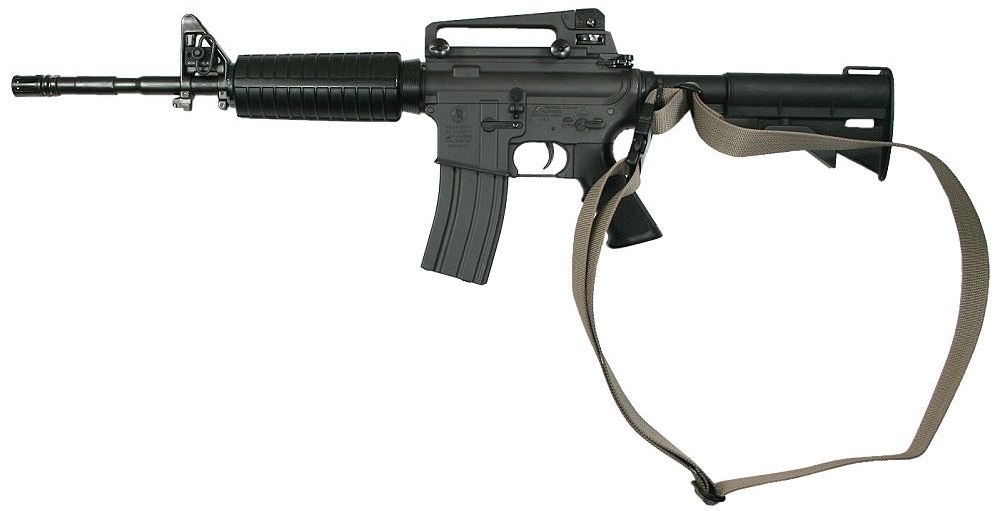
The single-point sling provides the simplest setup and it's arguably the most popular type of sling for AR-15 owners. The one-point strap provides an easy, hands-free way to carry your long gun. It's typically favored by tactical rifle owners, law enforcement, and military because it provides an easy and quick transition to a shooting position with sights on your target.
Pros
The one-point sling is the easiest sling to carry. It can be draped around the neck or slung over and under the shoulders, and it allows your rifle or shotgun to remain slung directly in front of your chest with the muzzle down. This is a safe and comfortable position to carry your rifle if you're often standing still and need to work with your hands.
Cons
This sling setup isn't as comfortable for long-distance carry, especially if you're trekking a relatively far distance on foot and you prefer carrying your rifle without supporting it with your hands. For that, we recommend a two-point sling.
Two-Point Sling
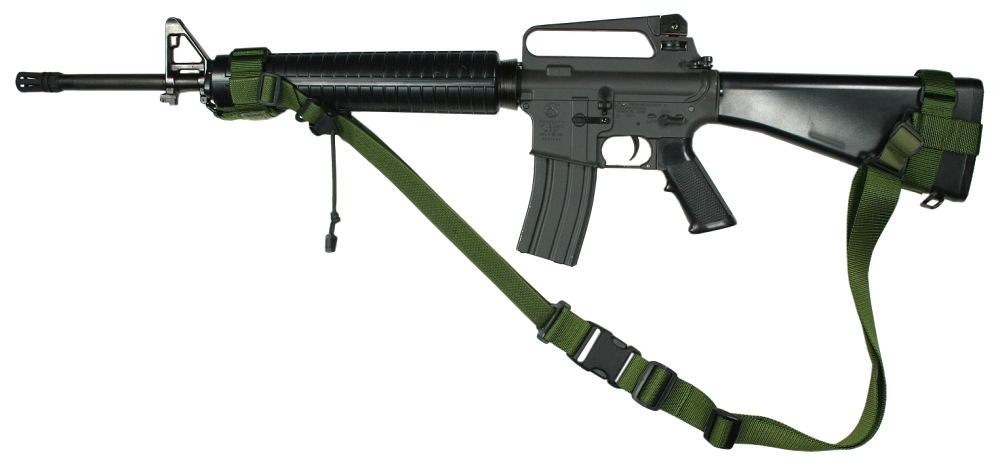
The two-point sling is the oldest and most popular setup, probably ever. It's the most versatile sling because it allows easy over-the-shoulder carry in various styles, like the European, African, and American carry methods:
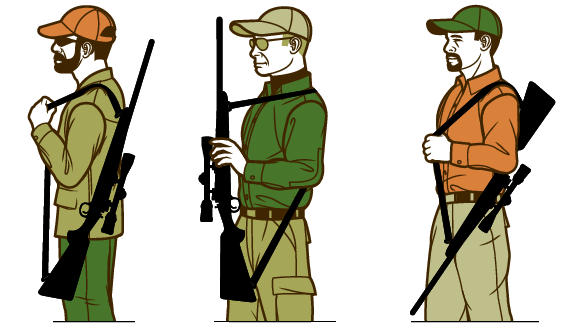
Pros
The two-point sling is also the easiest to put on and take off and, unlike the one-point sling, this setup can be used to provide a stabilizing hold on your rifle when you're aiming and firing. This is called a sling hold, which we'll cover later.
Cons
The two-point sling provides a much longer strap than a one-point setup and, compared to a one-pointer, it doesn't provide as much free motion when you're trying to shoulder and fire your rifle while wearing the strap.
Three-Point Slings
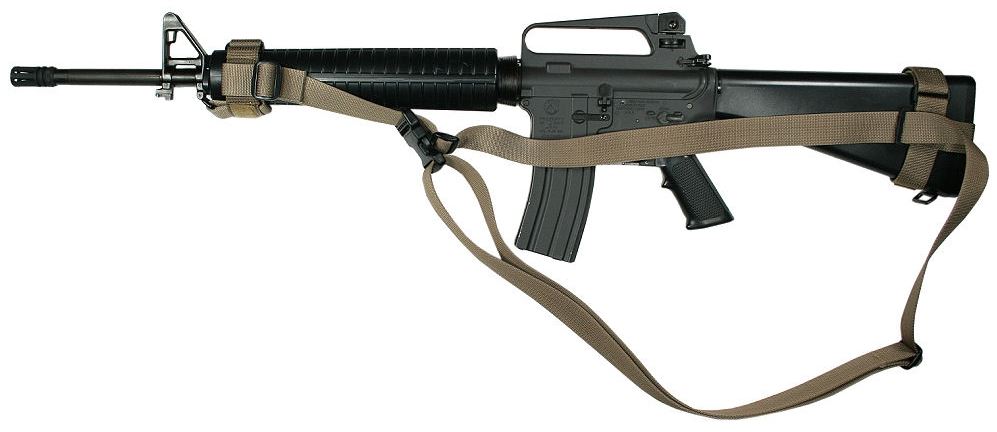
The three-point sling is a specialized setup that focuses mostly on the carry aspect of a good rifle strap. Like the two-point sling, this setup provides various carry positions but it focuses on rifle orientation and different formations:
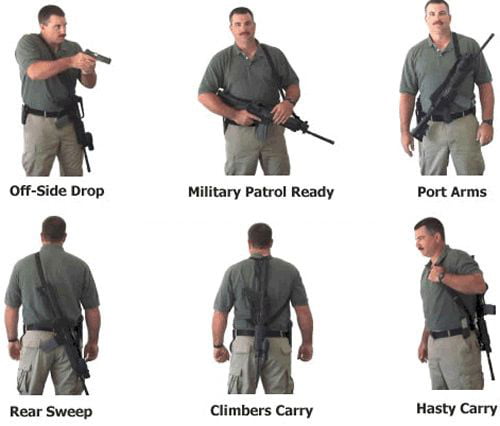
Pros
These carry methods provide a wide range of free motion while keeping your rifle stabilized and tucked close to your person. This is an especially convenient setup for climbers, hunters, and military and law enforcement engaged in foot patrol or mounted operations. This setup can provide adequate stability when firing from the hip or shoulder, using a sling hold method.
Cons
Donning and doffing a three-point sling takes time. Getting this setup sized correctly requires plenty of adjustment, too. If you're in a hurry and need to quickly ditch your straps, removing a three-point sling might be difficult. This is especially true if you're wearing plenty of gear.
Types of Sling Mounts and Adapters
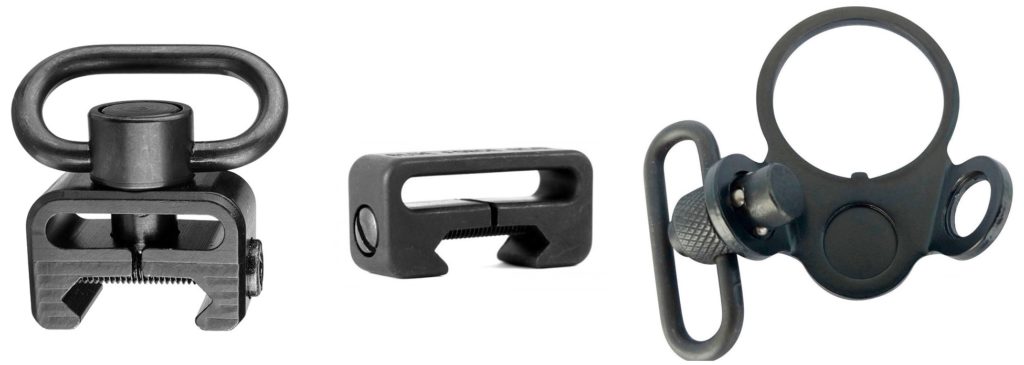
There are various types of mounts available for the average rifle sling. Adapters are used to convert a sling from one mount type to another. Adapters are also used to convert slings from one-, two-, or three-point configurations to any other.
For most modern long guns, sling mounts are made to attach to standard Picatinny/1913 or M-LOK rails, buttstocks, and receivers. Some sling mounts don't require rail attachments, since their attachment points can often be found pre-fabricated on handguards and latch plates, especially when it comes to the AR platform.
QD Swivel Mount
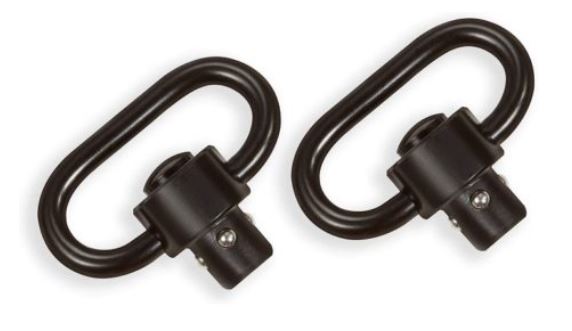
QD sling mounts, or "Quick-Detach" mounts, are some of the most common sling mounts you'll find. Most modern handguards, latch plates, and buttstocks on the AR platform come with pre-drilled QD stud mounting holes. That means you don't need to install anything extra to connect your sling.
These mounts are also the most convenient. To attach or detach a QD stud, just depress the spring-loaded button atop the mount. This unlocks the stud's ball bearings, which clip inside the mounting hole. Swivel studs are also popular because they can rotate freely within their holes. This prevents your sling from twisting or wrapping itself up.
Locking Swivel Mounts
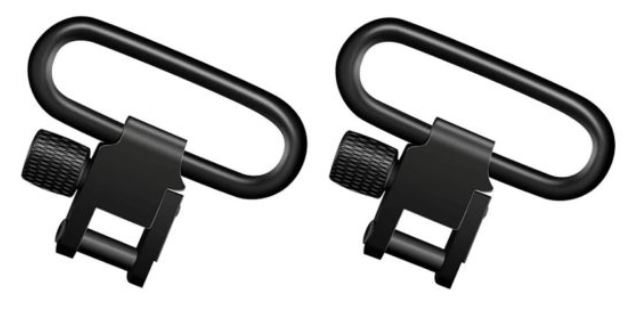
Quick-detach studs can be pulled free of their mounting holes with enough force. To prevent this, you can invest in locking swivel mounts instead. These are threaded mounts that use small steel bars to connect to stud holes mounted on your rifle. This studs cannot rotate freely in their mounts, but they provide a locked mount in exchange for less range of motion.
Clip and Hook Mounts
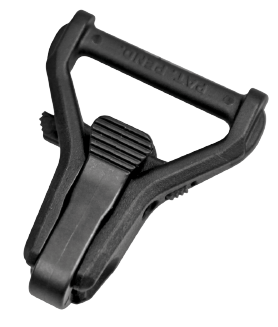
HK-style hook and Magpul Paraclip mounts are quickly becoming the most popular sling attachments. They provide a solid, locking connection to your rifle and they can rotate and swivel more freely than locking studs. They can also be attached and detached more quickly than a locking stud, but they don't suffer from accidental disconnects with excessive force, like QD studs.
Sling Latch Plates
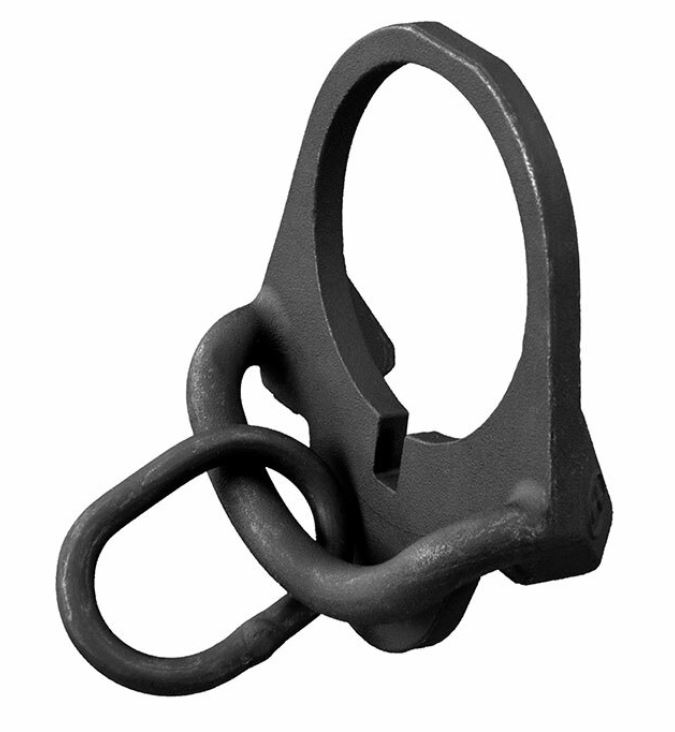
The sling mount latch plate is one of the best places to mount your sling on your AR-type rifle or pistol. This provides a natural point of contact that's close to the AR's center of gravity. The latch plate mount is particularly effective for hosting single-point slings. This setup allow your AR to hand right down your chest with the buttstock conveniently located near your shooting shoulder, and the handguard easily accessible at the waist.
Sling Adapters
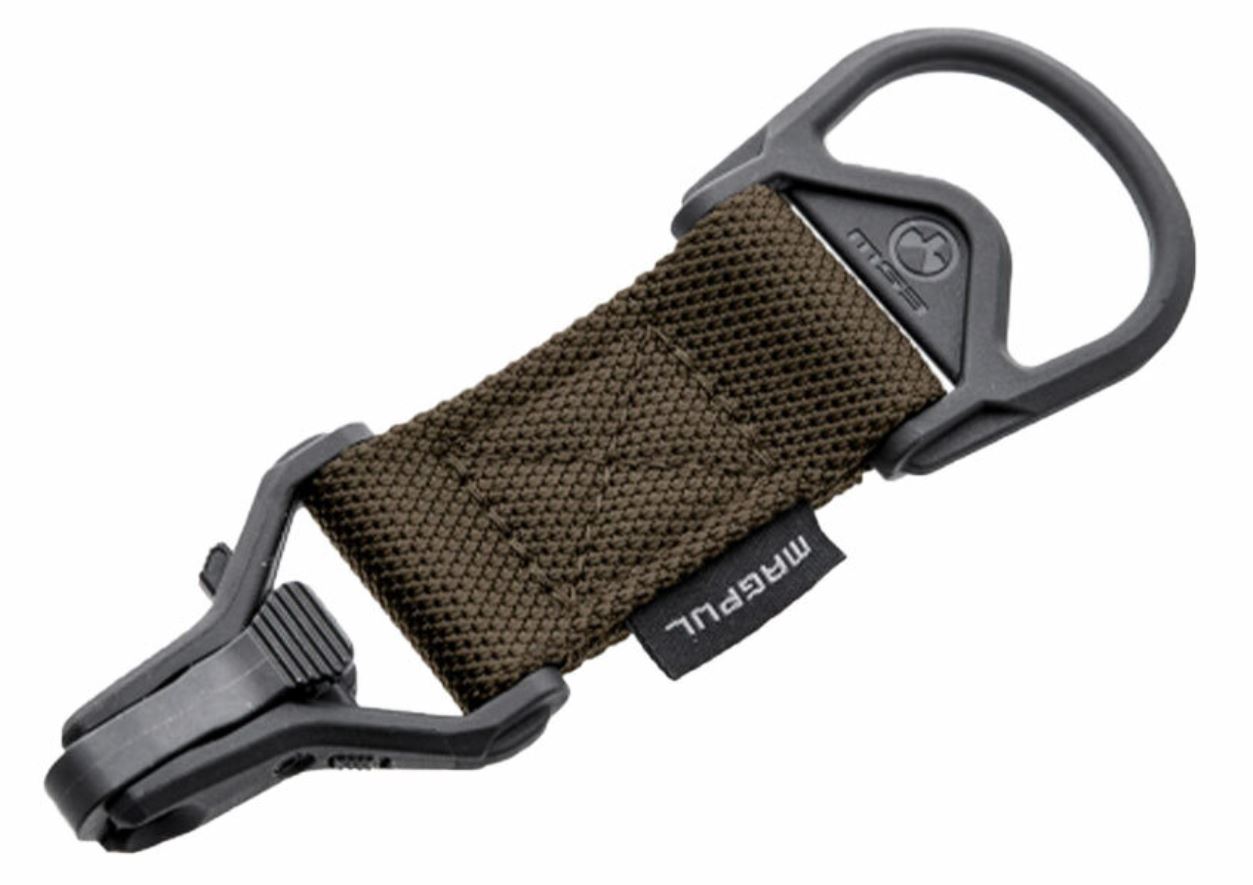
Sling adapters allow you to convert a sling into a different configuration. Sling adapters are little more than a sling mount with a small strip of ballistic nylon and a loop on the other end, for attaching your sling's original mounts. With adapters like these, you can change how your sling attaches to your rifle and you can swap your mount type without having to remove your original mounts from your sling's straps. Adapters like these can be used to convert a one-, two-, or even three-point sling into any other configuration.
Sling Materials
Sling material is just as important as the adapters and mounts you choose. Some slings are made to be waterproof and rubberized for all-weather shooting. Others have a bit of give, stretch, and padding to make comfortable carrying easy over long distances. Many are made from ballistic nylon, while others are cut from old-fashioned leather. Let's compare.
Ballistic Nylon/Cordura

Ballistic nylon - often marketed by the brand name Cordura - is the most popular sling material. It doesn't stretch, warp, or easily twist when hot, cold, or wet. It's an incredibly tough material, capable of holding hundreds of pounds of force. Nylon is also comfortable to carry, providing a smooth fabric with piped edges that won't chaff your skin. Nylon also resists fraying and tearing when abused, and it can even be used as a tourniquet in an emergency.
Bungee Cord
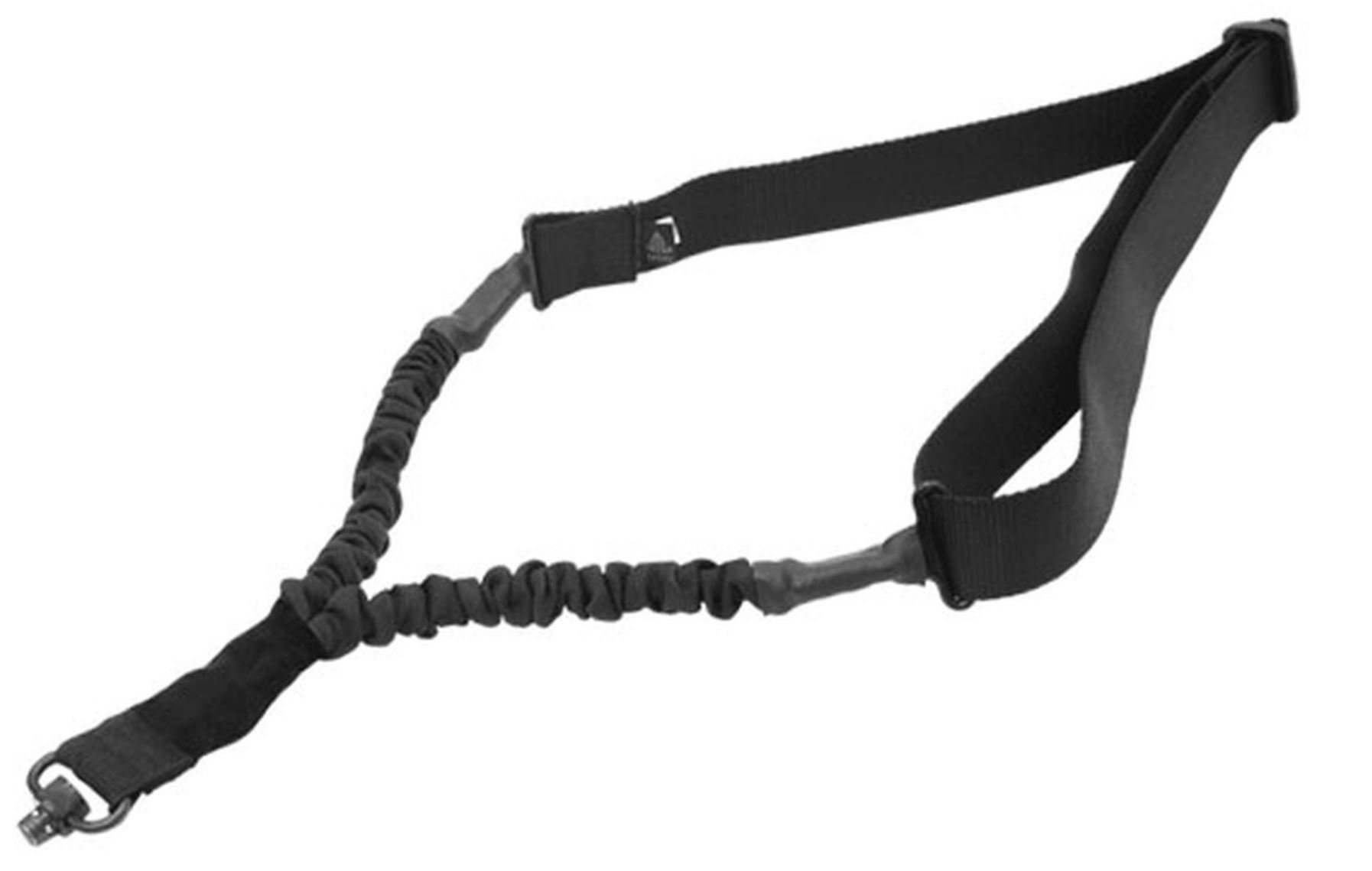
Many tactical slings, especially one-point slings, incorporate bungee cord to provide a damping effect for your rifle. This helps prevent your long gun from bouncing around when you're on patrol or walking on foot, and it can be used in tandem with a sling hold to greatly improve felt recoil and muzzle control.
Neoprene/rubber
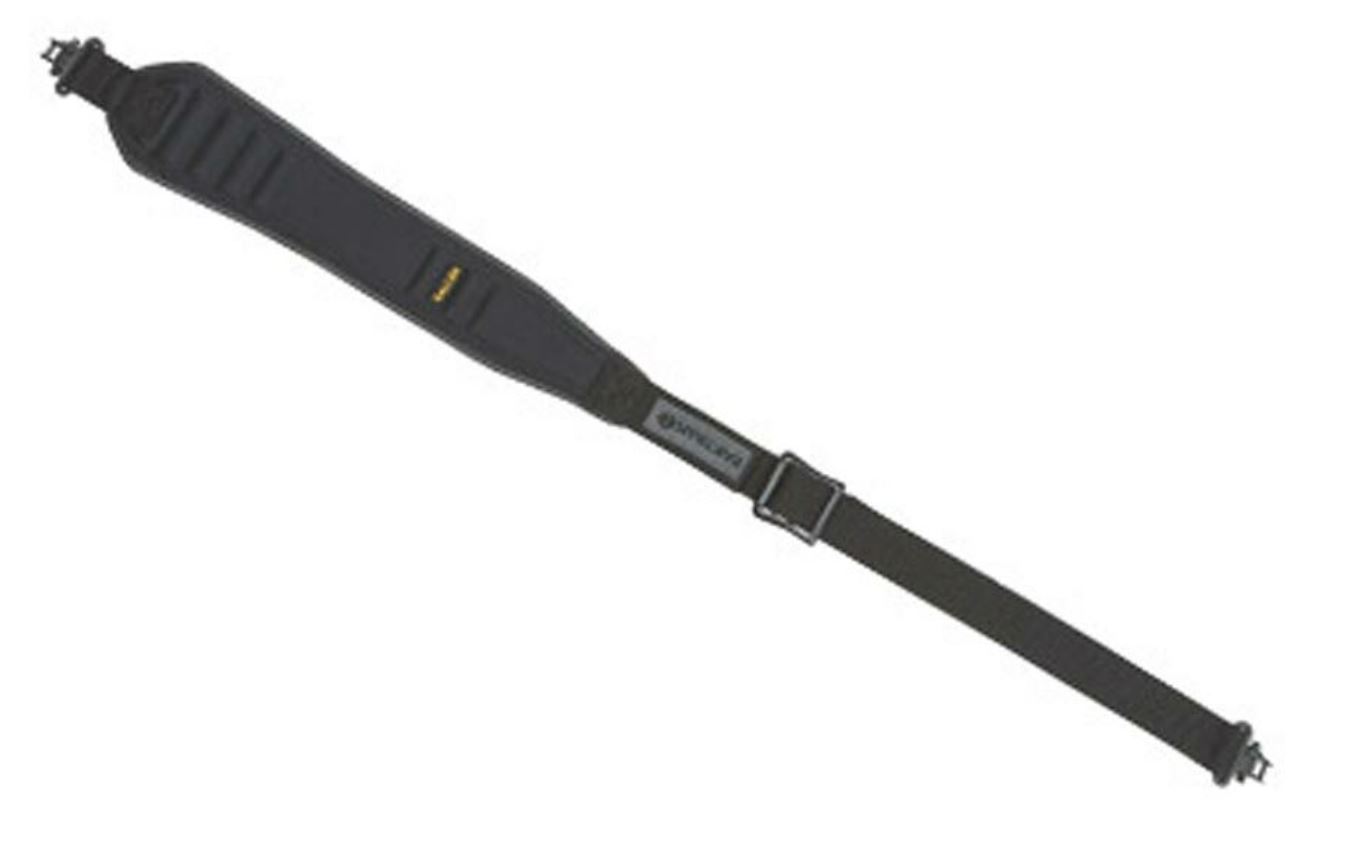
Neoprene and rubber are naturally waterproof and wick away moisture, while providing comfort and extra padding. You'll often find neoprene covering the padded material on all-weather hunting slings. This is a soft, stretchable fabric that's naturally antimicrobial.
Leather
Leather is favored among hunters and some competitive shooters because of its ability to hold plenty of weight. It has the least "give" of any sling material and it's perfect for holding big, heavy rifles without stretching and failing. Leather is arguably the only sling that provides some form and function, often complementing a rifle with a fine, polished grain and bronze or copper metal fasteners.
Using Your Sling to Shoot
A proper rifle sling can also provide you with a stabilizing brace that helps support your long gun and mitigates felt recoil. This is accomplished with something called a sling hold.
What's a sling hold?
A sling hold acts as an anchor between you and your rifle or shotgun. A sling hold involves using your sling strap and buckles as a way to create tension between your non-firing/support arm and hand, and the muzzle end of your long gun, like so:

Using a purpose-built sling like the Wilderness Cleckner Cuff Sling, the shooter threads his support arm through a loop built into the sling's strap. This loop is adjusted for length and diameter using two tri-glide buckles. With the support arm threaded through the sling, tension is created between the support arm and the barrel and stock. This reduces muzzle sway and rise from recoil, and it provides a more stable reticle and point of aim.
Making your own sling cuff
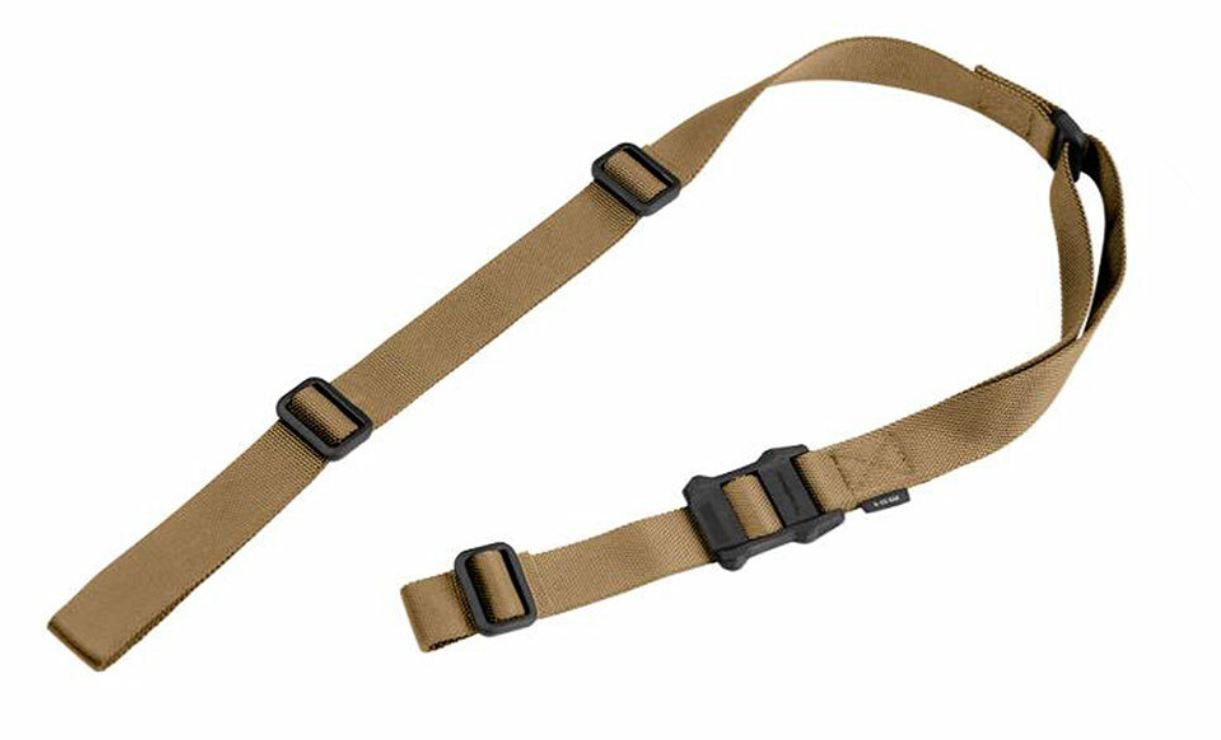
If you own a Multi-Mission Sling from Magpul, then you already have what you need to create a stabilizing cuff so you can improve your accuracy. The MS slings utilize tri-glide adjustment buckles which, when sized correctly, allow for part of your sling's strap to function just like a traditional cuff sling.
DISCLAIMER: If you are new to the world of DIY gun building, you likely have a lot of questions and rightfully so. It’s an area that has a lot of questions that, without the correct answers, could have some serious implications. At GunBuilders.com, we are by no means providing this content on our website to serve as legal advice or legal counsel. We encourage each and every builder to perform their own research around their respective State laws as well as educating themselves on the Federal laws. When performing your own research, please be sure that you are getting your information from a reliable source.


